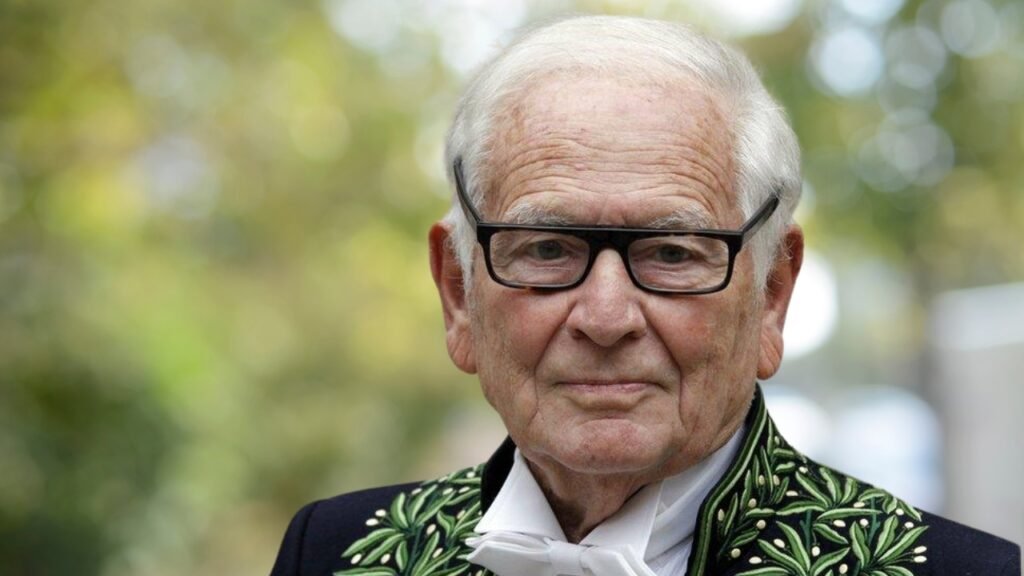Pierre Cardin, a name synonymous with high style and avant-garde design, revolutionized the way we view the intersection of art and fashion. Known for his futuristic approach to fashion, Cardin was more than just a designer; he was a visionary. From his space-age designs to his groundbreaking expansion into various industries, Pierre Cardin’s career left an indelible mark on the fashion world. His work transcended the limits of traditional haute couture, challenging norms and reshaping the industry. This blog delves into the life and legacy of Pierre Cardin, highlighting his key contributions to fashion, his innovative approach, and the lasting influence he continues to have today.
Pierre Cardin’s Early Life and Career Beginnings
Born in 1922 in Italy, Pierre Cardin moved to France at a young age. His journey into the world of fashion began when he entered the distinguished École des Beaux-Arts in Paris. Cardin’s passion for design and architecture was obvious early on, which laid the foundation for his future in fashion. Working as an apprentice for several notable designers, including the great Christian Dior, Cardin honed his skills and developed a unique design philosophy.
In 1950, Cardin took a bold step by launching his own fashion house. However, it was not until the 1960s that he started to truly carve out his place in the fashion world. His revolutionary, futuristic designs won him global fame, making Pierre Cardin one of the most sought-after designers of the time. His approach was unconventional, with clean lines, geometric shapes, and the use of unconventional materials that set his creations apart from those of his contemporaries.
Pierre Cardin’s Futuristic Designs: A Bold Leap Into the Future
One of the hallmarks of Pierre Cardin’s designs was his ability to predict and influence the future of fashion. In the 1960s, he began to introduce bold, space-age designs that were ahead of their time. His use of plastics, metallic fabrics, and geometric shapes challenged the established norms of the fashion industry. In 1964, Cardin introduced his now-iconic “bubble dress,” which became synonymous with the free-spirited and innovative designs of the era.
Pierre Cardin’s futuristic approach wasn’t just about aesthetics; it was a reflection of his belief that fashion should not be confined to tradition. He once said, “Fashion is not just about clothes; it’s about ideas, innovation, and the future.” This philosophy was evident in every collection he presented, blending art, technology, and design to create garments that felt more like wearable sculptures than simple apparel.
Expanding Beyond Haute Couture: Pierre Cardin’s Pioneering Move Into Licensing
While many designers stuck to the traditional route of haute couture, Pierre Cardin sought to expand the scope of his brand. He was one of the first designers to fully embrace the idea of licensing his name, a move that revolutionized the fashion industry. Cardin’s decision to license his brand to produce a range of products, from home goods to perfumes, opened the door for other designers to follow suit.
This innovative strategy allowed Cardin to reach a broader audience while cementing his place as one of the first fashion moguls. His licensing deals were not limited to clothing but spanned across various industries, including furniture, accessories, and even electronics. This diversification allowed Pierre Cardin’s brand to thrive, making it a household name worldwide.
Pierre Cardin: A Designer Who Embraced Diversity and Inclusivity
Cardin’s design philosophy was not just about pushing the envelope in terms of aesthetics; it was also about embracing diversity and inclusivity. In an era when fashion was predominantly for the wealthy and elite, Pierre Cardin broke down barriers by creating designs that were accessible to a wider audience. His clothing lines were worn by celebrities, intellectuals, and artists, making high fashion feel more democratic.
Cardin’s commitment to diversity extended beyond his collections. He was known for creating designs that could be worn by people of all shapes, sizes, and backgrounds. He believed that fashion should be inclusive and represent the diversity of the world, challenging the traditional standards of beauty and size in the industry. His approach to fashion was revolutionary not just for its innovation but for its message of inclusivity and representation.
The Enduring Influence of Pierre Cardin: Today’s Legacy
Pierre Cardin’s influence on fashion continues to be felt long after his passing. His designs, which once seemed like a futuristic dream, have become timeless. The bold, geometric lines and avant-garde aesthetic he popularized are still seen in modern collections, inspiring designers across generations. Today, designers continue to experiment with unconventional materials and shapes, building on the foundation that Cardin laid.
Moreover, Cardin’s business strategy remains a model for success in the fashion industry. His early embrace of licensing set the stage for modern fashion houses to become global brands, and his ability to innovate both in design and business continues to inspire entrepreneurs around the world.
Conclusion
Pierre Cardin was more than just a fashion designer; he was a visionary whose influence reached far beyond the runway. From his futuristic designs to his pioneering business strategies, Cardin changed the landscape of fashion in ways that continue to resonate today. His legacy is one of innovation, inclusivity, and boldness—a reminder that fashion is not just about clothes but about ideas that shape the future.
As we look back on the life and career of Pierre Cardin, we recognize his enduring impact on fashion and culture. His work reminds us that true innovation is not afraid to break the rules and challenge conventions. Pierre Cardin’s designs will forever be a symbol of creativity, forward-thinking, and the power of art to shape the world around us.
“Fashion is a way to say who you are without having to speak.” – Pierre Cardin.

